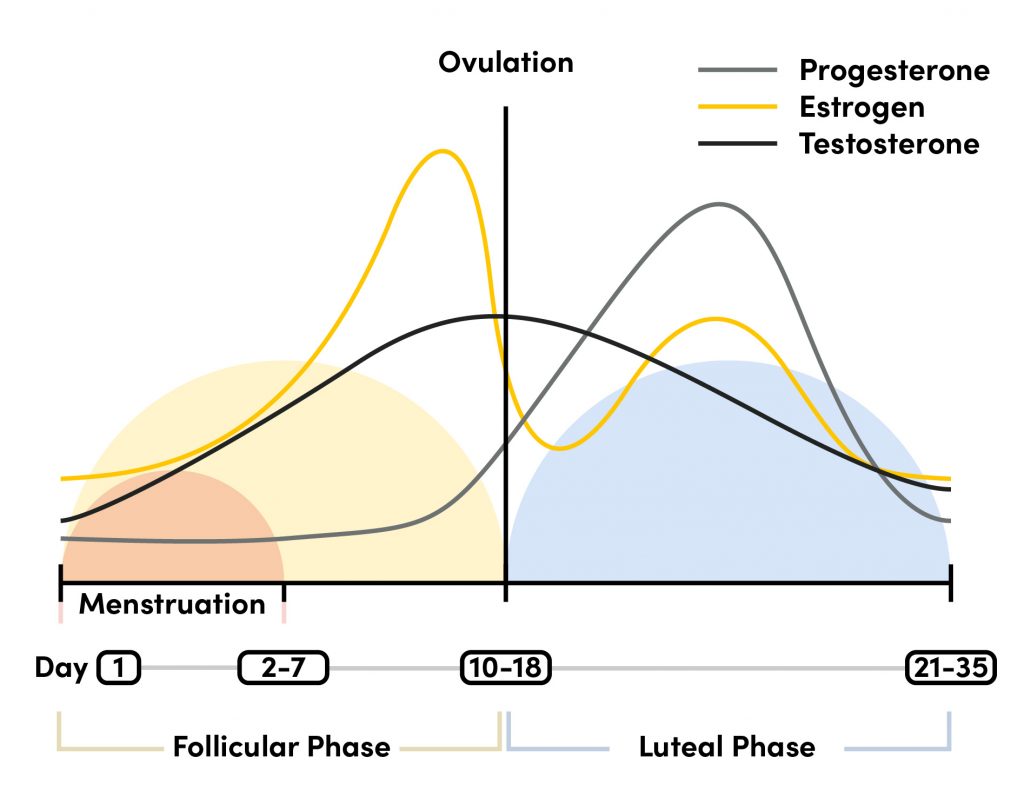Improve Your Training by Tracking Your Menstrual Cycle
How can tracking your menstrual cycle improve your training outcomes?
In last week’s post, we talked about how to track your menstrual cycle with training for climbing in mind.
Let’s jump forward 3-6 months. You’ve been tracking for a while now and noticed some days or periods where you feel your training is impacted (note: not everyone notices a change in their training with their cycle!).
Now you can use this information along with strategies in your training.

Trends in Motivation
Motivation is important and helps with long term consistency. If there is a repeating pattern where you feel less motivated for days or short phases, this may be due to your cycle.
Have a think about what really motivates you. What sessions do you enjoy? What sessions feel like the path of least resistance?
During this low motivation phase, it could be helpful to shape your climbing/training around what motivates you during this time.
For example…
If social climbing motivates you to get to the wall, then schedule fun climbs around this time.
This may allow you to maintain consistency in the long run and feel motivated when your structured training comes back around.
Syncing your Training with Your Cycle
There are a number of pillars in training, such as recovery, progressive overload, getting the correct training intensity, etc.
When you look back at your tracking data, you may notice a pattern where your cycle is interacting with one of these pillars. If this is the case, you may want to adapt your training.
An example of this could be disturbed sleep during the premenstrual phase making recovery feel reduced.
If tracking shows this to occur consistently just before menstruation, then this period of your cycle could be scheduled as rest days or lighter days.
Most training plans (or less structured climbing schedules) have a degree of flexibility within them. It may be that nothing has to change in your overall plan; you may simply schedule around these days where recovery feels reduced. Alternatively, you could use this time for a deload week, or lighter load week.
Trends in Rating of Perceived Effort
If you notice that the same exercises feel harder, more tiring or more demanding at different points in your cycle, then you can use this information to inform your training.
You can change the intensity of your sessions so that your RPE (rating of perceived effort) stays within the correct range for your training, session-to-session (even if this means reducing the intensity).
For example, at one point in your cycle, you may complete your endurance training on a lower grade than the previous session, but achieve the same RPE.
You need to explore how you’re feeling in the session; this can be done as part of your warm-up.
Changes in Cycle Length
If you have tracked and noticed inconsistent or changing cycle lengths, this could be indicative of low energy availability.
Potentially examine your recent climbing and training. Has the load been high? Has it changed? Are there other things in your life that have been demanding your energy?
It may be worth evaluating your energy intake, energy expenditure, load, time available for rest and recovery, etc. and consider making adjustments.
If you are concerned about a change in your cycle or you miss periods then go to your doctor.
Conclusion
By tracking your menstrual cycle and noticing trends in its effect on your training (motivation, RPE, cycle length and other effects), we can modify our plan to improve our training.





